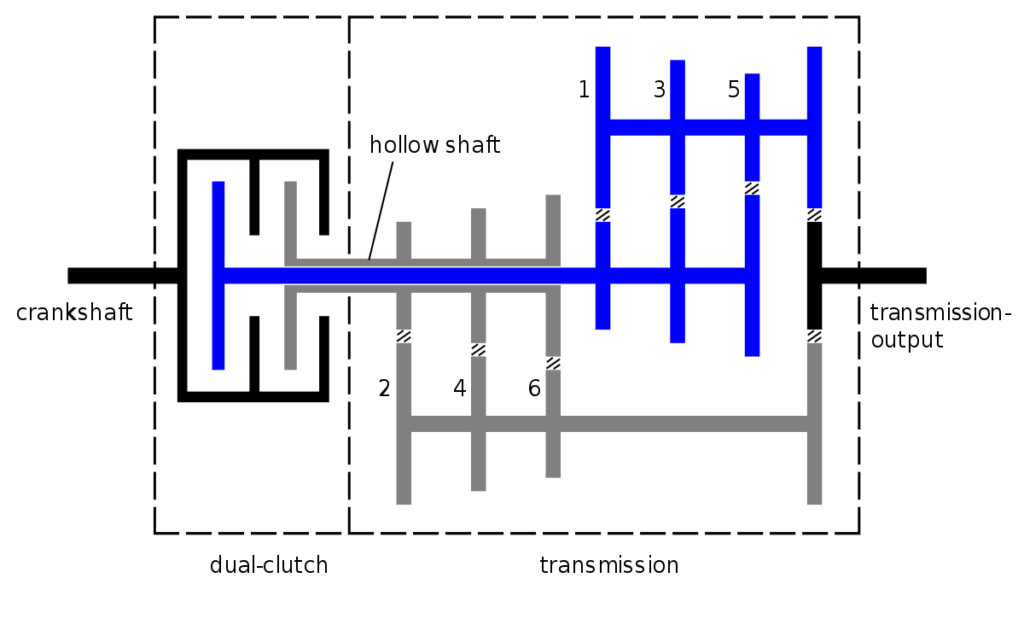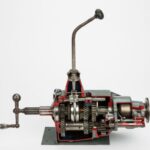A dual clutch transmission, commonly abbreviated to DCT uses two clutches, but has no clutch pedal. Sophisticated electronics and hydraulics control the clutches, just as they do in a standard automatic transmission. In a DCT, however, the clutches operate independently. One clutch controls the odd gears (first, third, fifth and reverse), while the other controls the even gears (second and fourth) as shown in figure. Using this arrangement, gears can be changed without interrupting the power flow from the engine to the transmission.
A two-part transmission shaft is at the heart of a DCT. Unlike a conventional manual gearbox, which houses all of its gears on a single input shaft, the DCT splits up odd and even gears on two input shafts. The outer shaft is hollowed out, making room for an inner shaft, which is nested inside. The outer hollow shaft feeds second and fourth gears, while the inner shaft feeds first, third and fifth.



